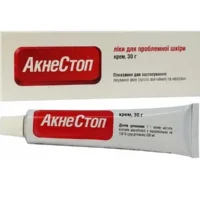Description
Opatanol (Olopatadine) Eye Drops 0.1% 5 ml Vial
Ingredients
- Active ingredient: Olopatadine hydrochloride 0.1%
- Other ingredients include benzalkonium chloride, sodium chloride, sodium hydroxide, and water
Dosage
Recommended dosage: Instill 1 drop in the affected eye(s) twice a day, with a 6-8 hour interval between administrations. Do not exceed the prescribed dosage.
Indications
Opatanol eye drops are indicated for the relief of ocular itching associated with allergic conjunctivitis.
Contraindications
Do not use Opatanol eye drops if you are allergic to olopatadine or any other ingredients in the product. Consult your healthcare provider before use if you are pregnant or breastfeeding.
Directions
Administer Opatanol eye drops exactly as prescribed by your healthcare provider. Wash your hands before use. Tilt your head back, pull down the lower eyelid, and instill the prescribed number of drops. Close your eyes gently for 1-2 minutes.
Scientific Evidence
Olopatadine, the active ingredient in Opatanol eye drops, is a selective histamine H1 antagonist with mast cell stabilizing properties. Studies have shown that olopatadine effectively reduces ocular itching and other symptoms of allergic conjunctivitis by blocking the release of histamine and other inflammatory mediators in the eye tissues.
Additional Information
Opatanol eye drops have been clinically proven to provide rapid and long-lasting relief from allergic conjunctivitis symptoms. The safety and efficacy of olopatadine have been demonstrated in various clinical trials, making it a preferred choice for the management of allergic eye conditions.
- Pharmacological studies have highlighted the role of olopatadine in inhibiting eosinophil recruitment and activation in the conjunctiva, thereby reducing the inflammatory response associated with allergic reactions.
- Olopatadine has a favorable tolerability profile, suitable for long-term use in chronic allergic conjunctivitis patients.
Compared to other antihistamine eye drops, Opatanol has demonstrated superior efficacy in relieving ocular itching and redness, with a rapid onset of action. Its once-daily dosing regimen offers convenience and improved patient compliance, leading to better management of allergic eye symptoms.





